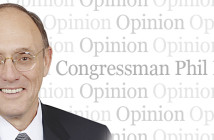By Jeff Keeling
I found highly interesting an opinion expressed by the local Chamber of Commerce in its “Focus 2015” document, which appeared in our office this week and was part of the Chamber’s 75th anniversary in 1990. A 20-member education focus group chaired by Nancy Dishner reached five main conclusions, one of which was summed up in a simple sentence: “There is an immediate need to proceed with a city/county school consolidation.”
Many of the committee members to whom such an idea made sense then are still around today. The proposed school consolidation never occurred. I wonder what they think of the notion today, as the Johnson City and Washington County school systems take great lengths to protect their own interests to the degree that the county system is suing the city system over distribution of liquor tax revenues.
With school systems stretched to their funding limits, one cannot fault the county for suing, nor the city for defending itself. Chalk this up to a state-imposed, difficult-to-interpret revenue structure that trickles down to localities – a number of whom are paying legal fees to try and get the thing sorted out in their favor.
Likewise, again thanks to state directives, one cannot fault Johnson City for being less than enthusiastic about changing the way sales tax dollars are allocated. A good portion of those dollars stays in the city or county where they were generated, and since most county residents shop in the city, that arrangement benefits the city inordinately.
It seems ludicrous that our community operates under an educational model in which it makes sense for a school system educating roughly half the county’s students (Washington County) to file a $3 million-plus lawsuit against the system educating the other half. There is little common sense in a state-mandated sales tax structure that has led to a clear disparity between the school systems.
Also ironic is a mechanism for sharing capital funding for building projects that creates a situation in which, when the county needs to build or renovate schools, it must raise sufficient funds to provide the city system dollars proportionate to its share of students. This is fair, but it probably isn’t very efficient, since capital needs of two different systems don’t operate in tandem. It also helps explain why Science Hill has not one but two perfectly adequate gymnasiums.
None of these points is meant to serve as an indictment of either school system, nor of the people who operate or oversee them. Both systems do an excellent job of educating students with the resources they have available. While any bureaucracy is going to have its share of inefficiencies, both systems’ academic performance, measured objectively at the state level, is superior to many systems that spend more money per pupil.
Yet the inequities exist, and in the current climate of tight revenues, they have led us toward lawsuits and acrimony and away from the vision expressed in the Chamber’s Focus 2015 document. Maintaining separate systems will leave us with a funding mechanism status quo that makes funding disparities inevitable. As economic pressures persist, the status quo will produce yet more tension between neighbors should Johnson City maintain what is the largest municipal school system remaining in the state – all larger Tennessee cities are part of consolidated districts.
An objective study of consolidation’s merits – not something set up to yield a predetermined outcome – is needed now as much as it ever has been.
I’m probably jockeying a dead horse already, but I’ll repeat words from a column I wrote in January:
Done properly, consolidation would not be easy. The best way to do it would be to use Tennessee Code Annotated Title 49 Part 12. It outlines provisions for a “unification educational planning commission,” and includes “very specific requirements for the planning process and an approval process for all legislative bodies and citizens involved,” according to a 2012 report from the state comptroller’s office.
Using this part of Title 49 would require calm, thoughtful, harmonious leadership. Most other consolidated districts haven’t taken this route, meaning our community could be a leader in laying the best possible groundwork for its future economic security and quality of life. Eyes would have to remain on the prize of constructing the most excellent, equitable system to ensure the best opportunity at life success for all of our community’s schoolchildren, and off of protecting turf. We all would have to realize consolidation isn’t just a way to lower school funding, because done right, it isn’t. But our kids and our community deserve no less.





